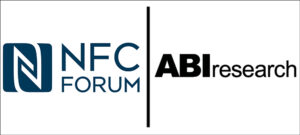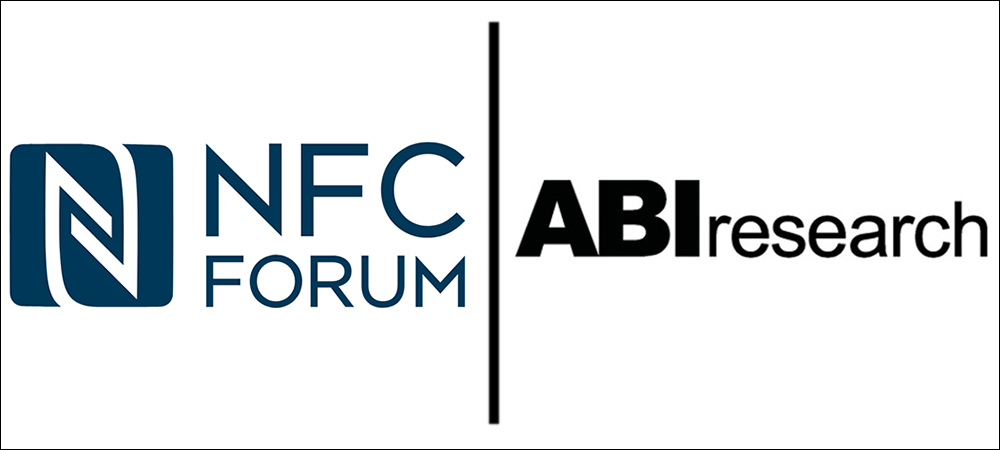- Comparison Against 2020 Research
- NFC Use for Non-Payment Applications to Follow
- Education Efforts for Further NFC Adoption
A new study conducted by global technology intelligence firm ABI Research for the NFC Forum has found that Near Field Communication (NFC) technology use for payments has risen to 85 percent of those polled worldwide. What’s more, the report indicates, NFC use in the form of payment cards is up by 30 percent from two years ago.
Most respondents adopted NFC payment methods only recently, while the majority said they have been using contactless mobile payment wallets for less than two years, and that their overall user experience was high. Based on these results, the study found that other NFC technology use cases may follow payments applications as consumers become more comfortable with the tapping process. The survey included 2,620 respondents from throughout North America, Asia and Europe, covering all ages over 18.

Near Field Communication, a 13.56 MHz-based technology compliant with the ISO 14443 standard, has been available for years in Android- and iOS-based devices, enabling contactless payments and other engagements without requiring a swipe or a QR-coded camera-based experience. Apple Pay and Samsung Pay are both NFC-based systems. The study, conducted earlier this year, found an increase in contactless payments that may have been driven extensively by the COVID-19 pandemic.
According to the study, consumers have been migrating toward touchless payment processes to reduce the risk of disease transmission. However, the technology’s ubiquity and relative convenience have also led consumers of all ages to opt for tap-and-pay solutions, whether they are using phones, wearable devices or contactless cards, says Andrew Zignani, ABI Research’s research director.
Comparison Against 2020 Research
The study’s purpose, the organization explains, was to better understand consumer adoption and familiarity with NFC contactless payments, determine how favorable user experiences were, and compare results against a similar survey conducted in 2020. The scope of the research included NFC use in contactless payments with payment cards or mobile wallets in smartphones.

Andrew Zignani
The 2020 survey took place during the early days of the pandemic, at which time researchers also asked survey respondents about contactless adoption and their perspectives on the technology. When ABI Research and the NFC Forum planned this latest study, Zignani says, they expected to observe an increase in NFC use throughout the past two years. However, he notes, “We weren’t expecting the growth to be so significant.”
More than two-thirds of those surveyed this year said they were familiar or very familiar with NFC technology. Beyond payment transactions, the 2022 study—conducted by a third-party company based on phone and online questionnaires—found that 48 percent of those who responded have used NFC technology to pay for public transportation.
Other NFC technology transactions are less common, the research indicates. Thirty-eight percent have used it to interact with a product they purchased, while 15 percent have used NFC for vehicle access. Additionally, 14 percent have gained admittance to a venue with NFC, and 13 percent have accessed their homes or offices in the same way. Least common is the use of NFC for controlling appliances, or headphones and speakers, at 11 and 10 percent, respectively.
NFC Use for Non-Payment Applications to Follow
The frequency of NFC technology usage is expected to increase along with the acceleration of contactless card payments, Zignani predicts. Mike McCamon, the NFC Forum’s executive director, agrees. “The trend we are witnessing is the slow, steady growth of NFC into ‘beyond payments’ applications,” he says, “such as purchasing transportation tickets, mobile driver’s licenses, unlocking a door or wirelessly charging a small IoT device with NFC.”

MikeMc Camon
ABI Research found that both traditional and neo/challenger banks (financial technology startups) are placing emphasis on digital-first approaches, which could include Google Wallet or Apple Pay on a phone or wearable device as an alternative to a contactless card. Forty-seven percent of respondents already prefer to use their watch or phone over contactless card transactions, the study found.
Among those using mobile payment methods, there was a 37 percent increase for Apple Pay, while Samsung Pay was up by 35 percent. The survey indicates certain regions have experienced a greater uptake—especially South Korea, where 91 percent of respondents reported using some sort of contactless technology, which grew from 61 percent in 2020.
The latest survey included several questions that were not posed during the 2020 predecessor study. One was based on the preference for phone-based payments over smart watches or other wearables. The result showed that watches are still rarely used for payments. “I think smart watch use was lagging behind due to less exposure to smart watch payments versus mobile,” Zignani says.
Another new question specific to the 2022 study focused on how long users have been leveraging the technology. “We found that 91 percent of respondents had been using it for less than three years,” Zignani says, adding that this is unsurprising based on the technology’s availability in recent years. “I think, obviously, that reflects the kind of accelerated adoption” during the pandemic, he states.
Another notable point, Zignani says, was the overall favorable experience that 83 percent of respondents indicated they’d had with NFC use. The survey results, he reports, “bodes well for future use cases in terms of NFC for other applications.”
Education Efforts for Further NFC Adoption
The top two alternative use cases, public transport and consumer product interaction, can be expected to grow significantly as education drives by the NFC Forum and its technology providers continue. Already, tags are being applied to luxury products and other high-value items for both authentication and customer engagement. The survey found that the technology’s use for brand engagement fell to 38 percent this year, from 53 percent, which could be due to the large participation rate of new users focused on payment transactions.
When it comes to safety against attacks such as signal interception, comfort levels seemed to be high. However, ABI Research found that further messaging may need to reinforce the general security of NFC transactions, in order to provide a greater sense that such transactions are secure. Still, Zignani says the NFC industry may have some catching up to do, to meet the adoption rates of payment systems. “The growth potential for NFC use across different use cases is pretty enormous,” he states.
The NFC Forum is currently conducting educational outreach. NFC wireless charging and the Wayfinding Mark (see NFC Wayfinding Mark to Be a Universal ‘Tap Here’) are two key initiatives the organization has underway. The wireless charging initiative focuses on the use of NFC-enabled devices to become their own charging station by charging small IoT devices, such as digital pens and earbuds. The Wayfinding Mark is an icon that displays for users where to tap their phone on a device to attain the best NFC connectivity.
Almost 100 companies have licensed the Wayfinding Mark so far, McCamon says, and the NFC Forum added 128 members to its ranks last year. “Growth remains steady,” he reports. “We’ve become part of the daily lives of billions of people.”
Key Takeaways:
- Near Field Communication technology use for payments has risen to 85 percent worldwide.
- NFC use in the form of payment cards is up by 30 percent from two years ago.


